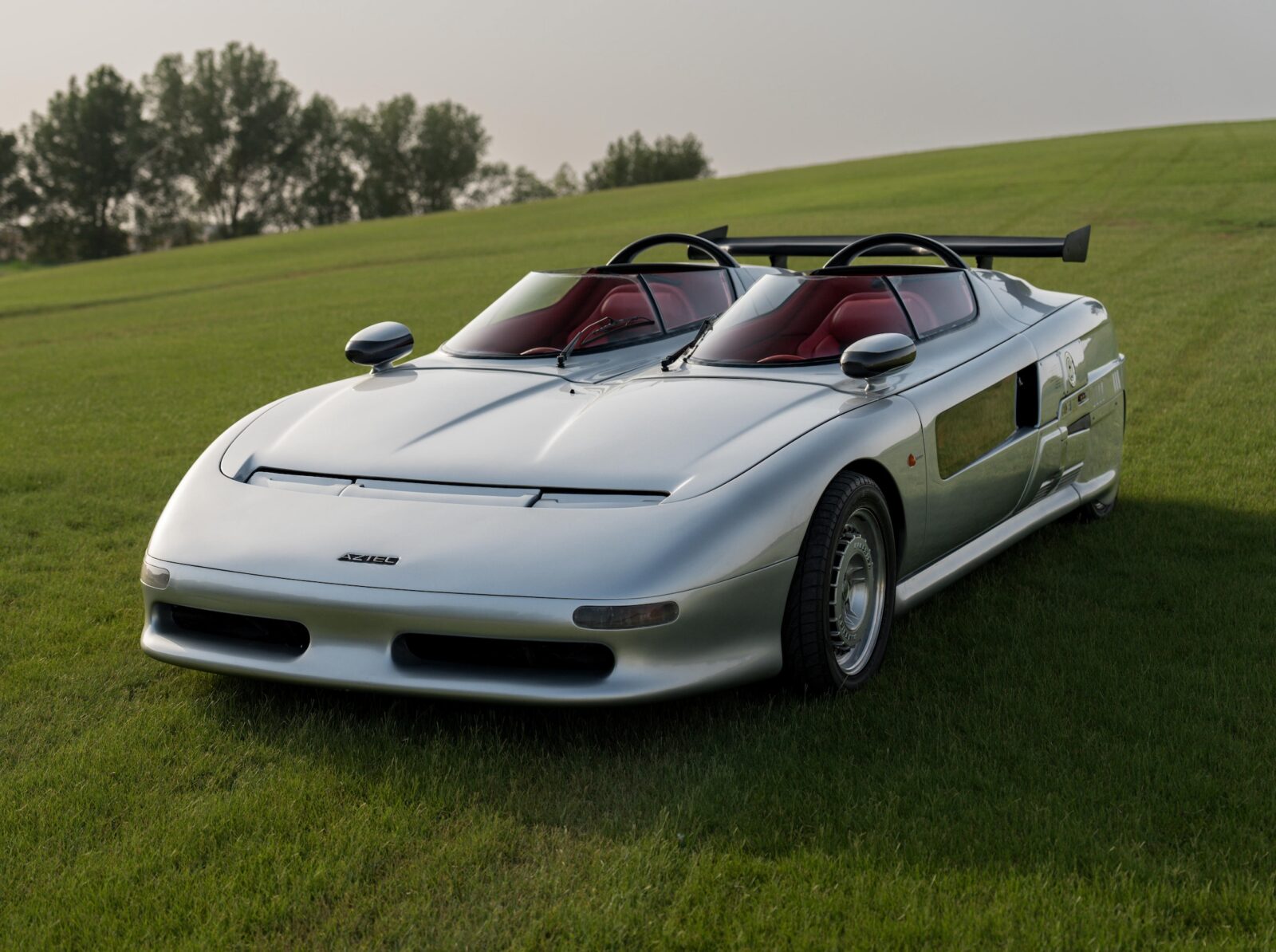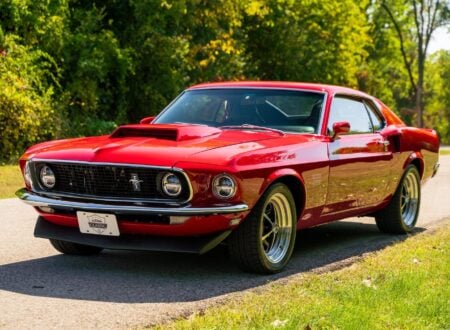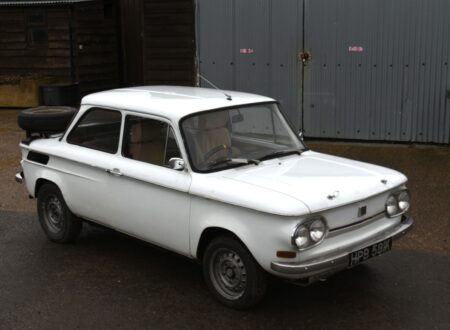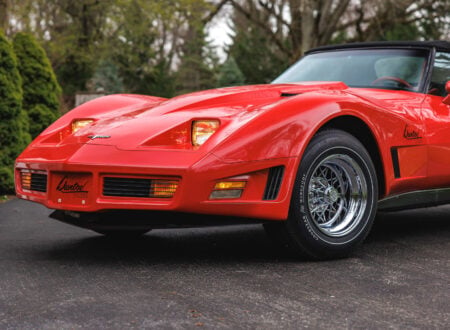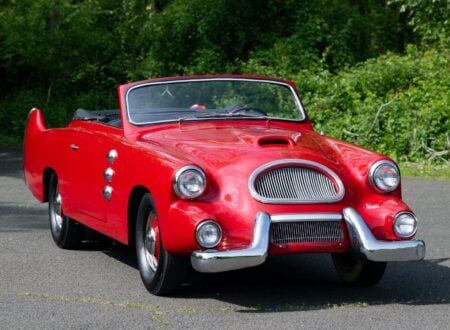This is the Italdesign Aztec, it’s believed that just 18 were made, each was powered by a turbocharged Audi Quattro engine sending its 250 bhp through the all wheel drive system from a Lancia Delta HF Integrale.
The Aztec was never originally intended to be a production car, it was a styling exercise alongside the Asgard MPV and Aspid coupe all from Italdesign. Japanese industrialist Mario Myakawa loved the Aztec and bought the rights to it, then he put it into limited production himself.
Fast Facts – The Italdesign Aztec
- The Italdesign Aztec was designed by Giorgetto Giugiaro at his firm Italdesign along with the Asgard MPV and Aspid coupe as a celebration of the company’s 20th anniversary in 1988. They were first shown at the Turin Motor Show that year, and they received breathless coverage in motoring media around the world.
- From the outset, the Italdesign Aztec must have seemed like an impossible vehicle. It was released less than two years after Group B rally was banned on safety grounds yet it utilized parts from two of the greatest Group B competitors – the engine from an Audi Quattro and the all wheel drive system from the Lancia Delta HF Integrale.
- The Italdesign Aztec featured two separate cockpits with their own windscreens and an electronic intercom system which allowed the driver and passenger to communicate. At first glance both seats have a steering wheel, however the passenger steering yoke is cosmetic and non-functional.
- Giugiaro never intended the Aztec for production, but Japanese industrialist Mario Myakawa fell in love with the car and used his considerable wealth to create a production version. It’s widely believed that just 18 were ever made, and impressively, they received German type approval for street use.
Creating A Group B Chimera
Group B was a short-lived rallying class created by the FIA to reduce the rules to a minimum, and give manufacturers broad carte blanche regarding their designs. It only ran from 1982 until 1986 when it was banned on safety grounds after a series of crashes which tragically resulted in both driver and spectator deaths.
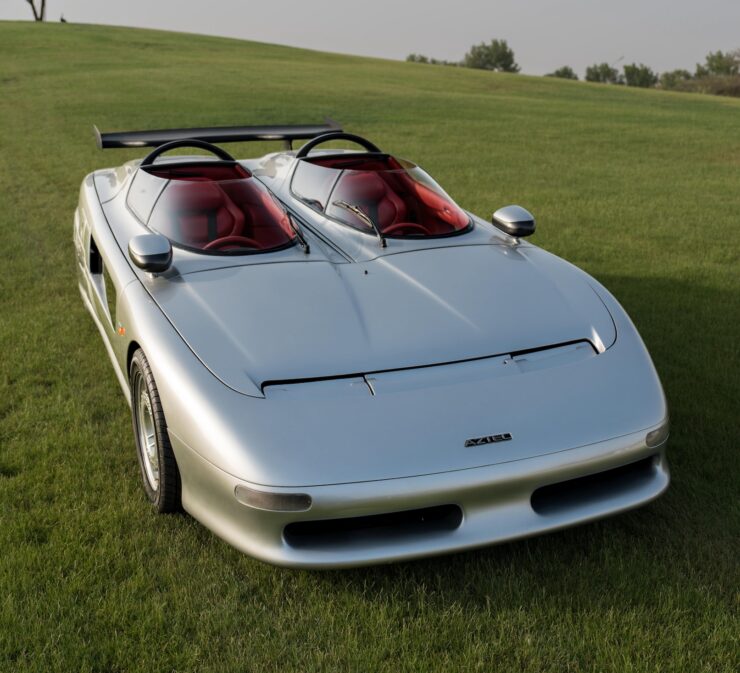

Despite this grim historic record, Group B is today better remembered as a period of shockingly rapid engineering development that saw the fastest and most powerful rally cars ever created – up until that point in time.
Two of the most influential Group B cars would be the Audi Quattro, which demonstrated the critical importance of a high-performance all wheel drive system, and the Lancia Delta S4 which perfected the mid-engined, AWD layout.
Due to homologation regulations manufacturers needed to produce road-going versions of their race cars and as a result the world got a (toned down) Audi Quattro and the Lancia Delta HF Integrale which was intended as a less outlandish relative of the Lancia Delta S4.
What automotive designer Giorgietto Giugiaro decided to do was marry the 250 bhp five-cylinder turbocharged Audi Quattro engine with the advanced all wheel drive system from the Delta HF Integrale. There are few people alive in the 1980s who could have pulled this off, and Giugiaro is certainly one of them.
As a highly-respected automotive designer who ran his own design firm called Italdesign, he was free from inter-automaker conflicts and enjoyed a high standing in the automotive community. So high in fact that he would later be voted the “Car Designer of the Century” by a panel made up of influential automotive designers from around the world.
As a result of his influence he was able to get his hands on all the drivetrain parts he needed for his new concept car, a car he would call the Italdesign Aztec.
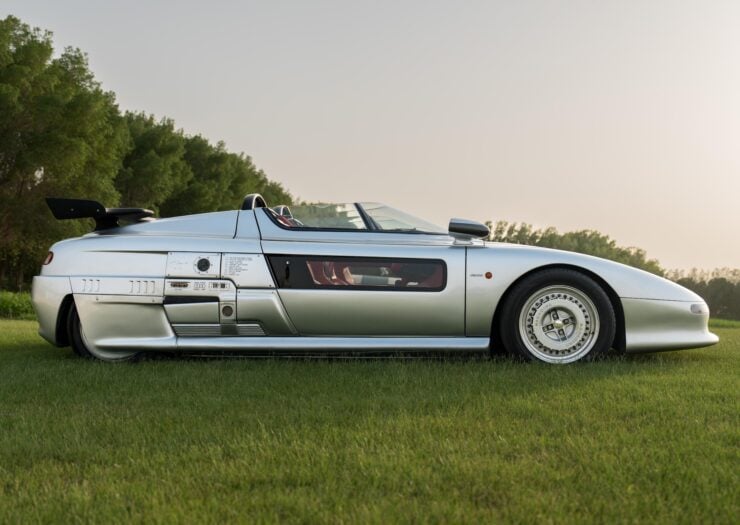

“When the Aztec prototype was exhibited at the Turin Motor Show in 1988, I found it difficult to imagine that it would become a real car. It is therefore of immense satisfaction that the Aztec is now actually roadworthy and not just a static styling exercise.” – Giorgietto Giugiaro
The Italdesign Aztec
The Italdesign Aztec was developed to celebrate the 20th anniversary of Italdesign, which had been founded by legendary automotive designer Giorgietto Giugiaro in 1968. The Aztec would debut alongside the Asgard MPV and Aspid coupe at the 1988 Turin Motor Show.
Given the fact that it was less than two years since Group B rally had been banned on safety grounds, the FIA’s most extreme rally class was still very fresh in people’s minds. It must have been quite the shock to see Group B mechanical parts from both Audi and Lancia integrated into a single car, and it was a car that was most certainly not intended for rally.
Giugiaro developed the Italdesign Aztec as a two-place roadster with separate cockpits behind separate windscreens. The driver and passenger communicate via an electronic intercom system that was advanced by the standards of the late-1980s.
The car was built on a steel chassis with an ultra-lightweight aluminum, carbon fiber, and Kevlar body – again, this was at the cutting edge by the standards of the time. To enter and exit the car the entire cockpit canopy would be opened upwards on a hinge that ran along the centerline of the car, so both canopies opened towards one another (see the picture below).
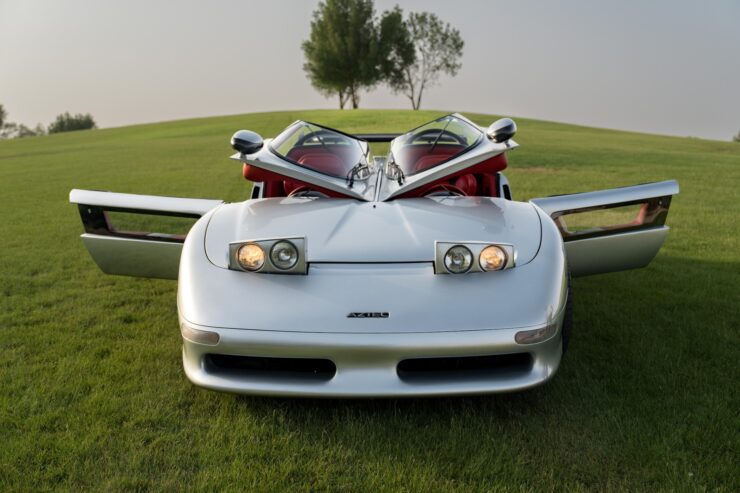

Power was provided by a 250 bhp five-cylinder, 20 valve, turbocharged Audi engine and transmitted to the ground through a 5-speed manual transmission and the all wheel drive system sourced from a Lancia Delta HF Integrale.
The film Blade Runner had been released six years before the unveiling of the Aztec, and it looked like it could have rolled off the set right onto the show stand at the Turin Motor Show. The car received glowing headlines in motoring publications around the world, and it was presumably in one of these magazines that Japanese industrialist Mario Myakawa saw it for the first time.
Myakawa was so taken with the Giugiaro design he bought the rights to it and set about using his considerable wealth and influence to get it into production. He hired Audi tuning firm Motoren-Technik-Mayer (MTM) to engineer it for homologation and lay out the plans for a limited production of a planned 50 units.
The asking price of DM 500,000 was equivalent to approximately $722,000 in 2023 USD, an exceedingly high figure for such a unique vehicle. Despite this, they did manage to sell at least 18 of them, though some sources say as many as 20 may have been created.
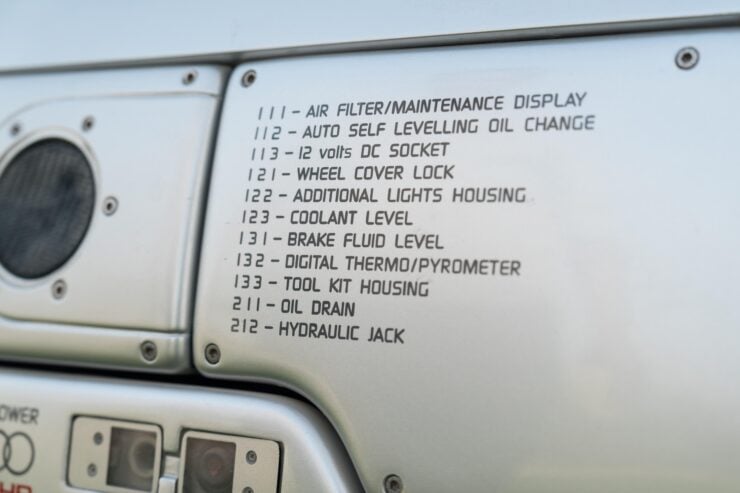

The surviving examples of the Aztec are now highly sought after and they never fail to stop people in their tracks – just as they did back in 1988 in Turin up on the Italdesign stand.
The example you see here is due to roll across the auction block with Bonhams on the 25th of November with a price guide of $180,000- $220,000 USD, and it’s being sold without reserve. If you’d like to read more about it ore register to bid you can visit the listing here.
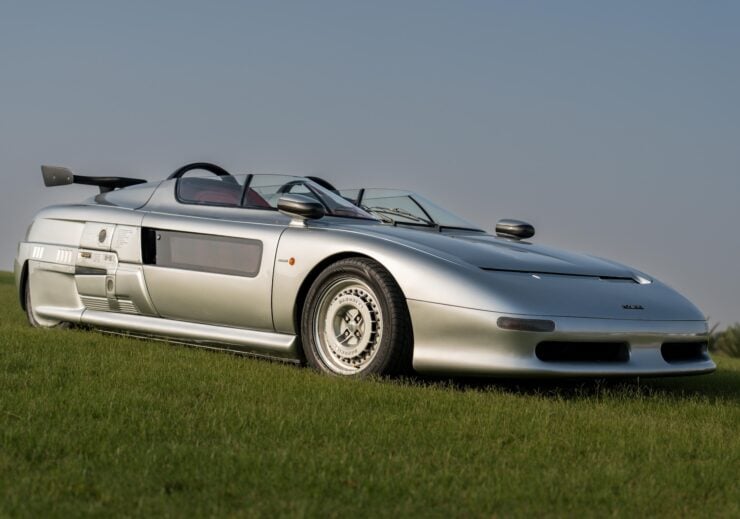
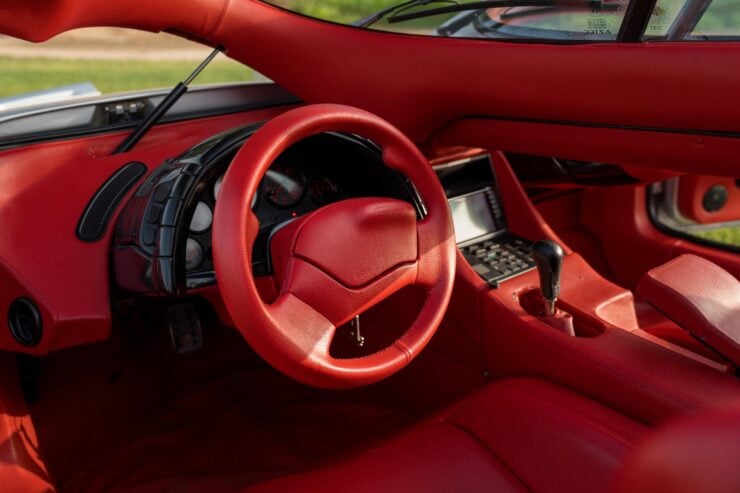
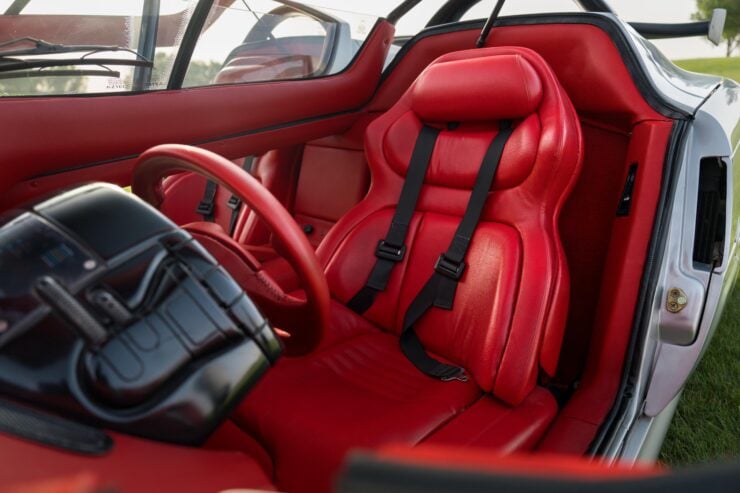
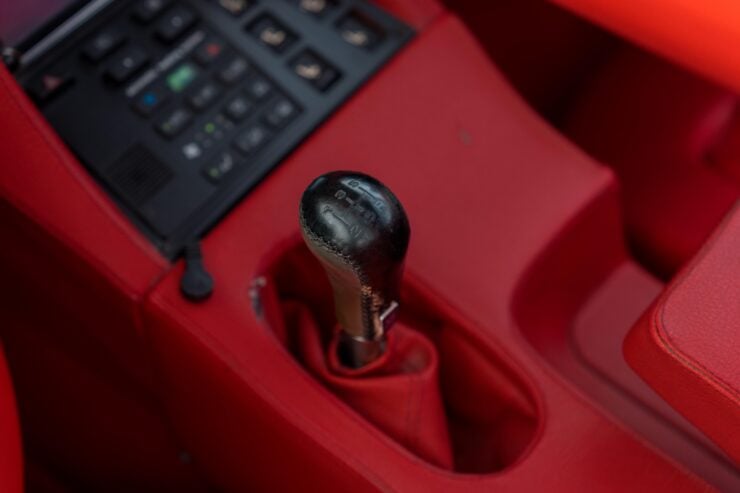
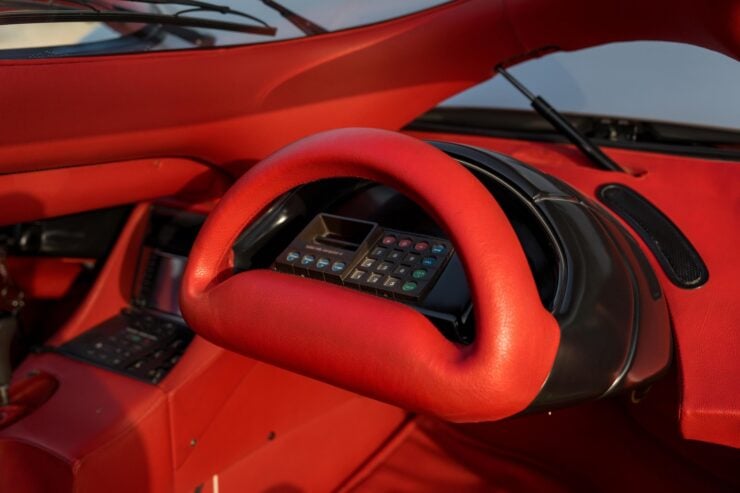
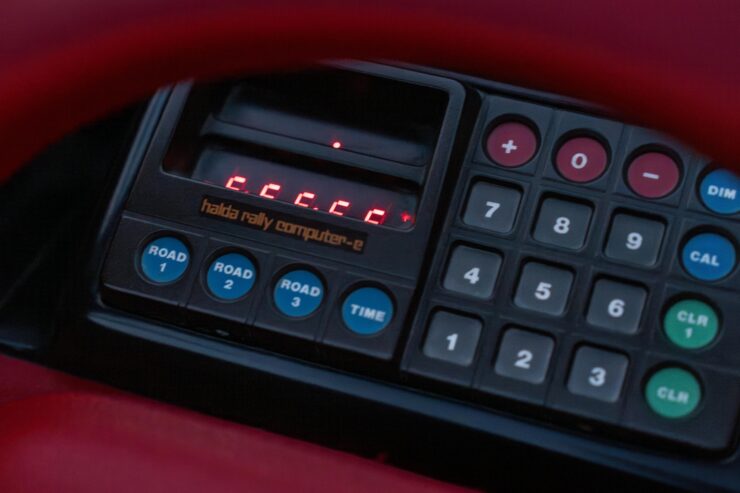
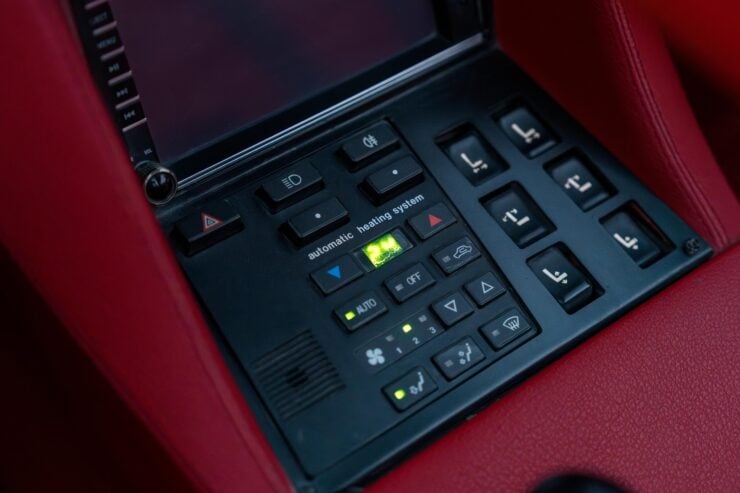

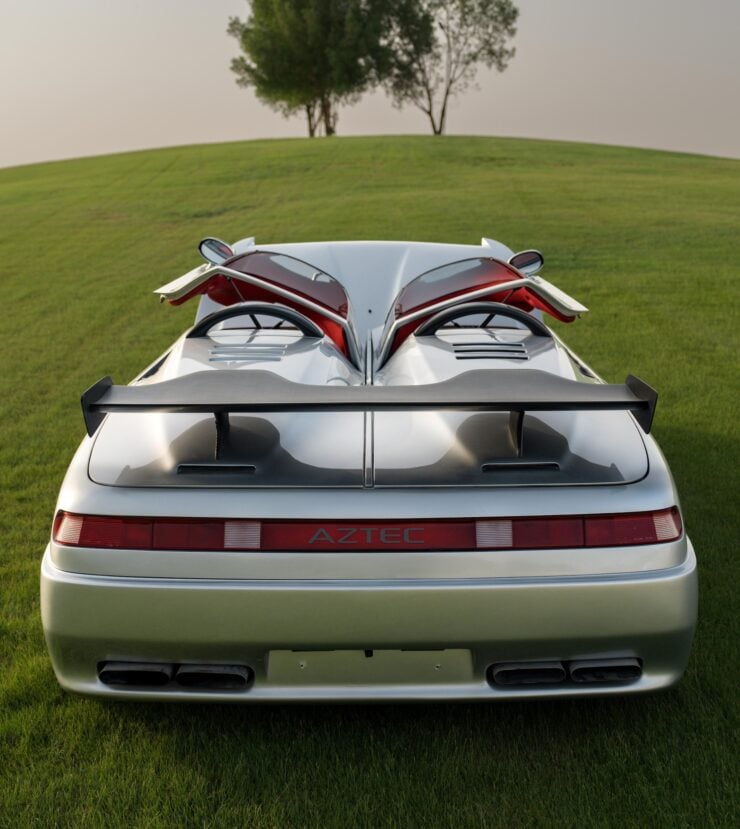
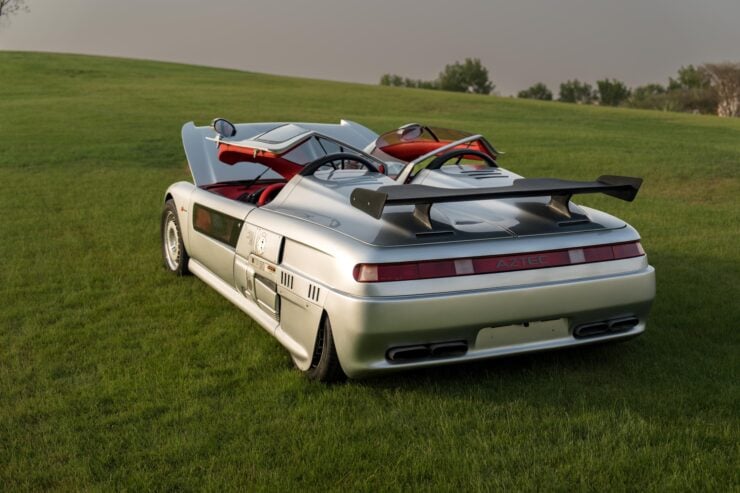
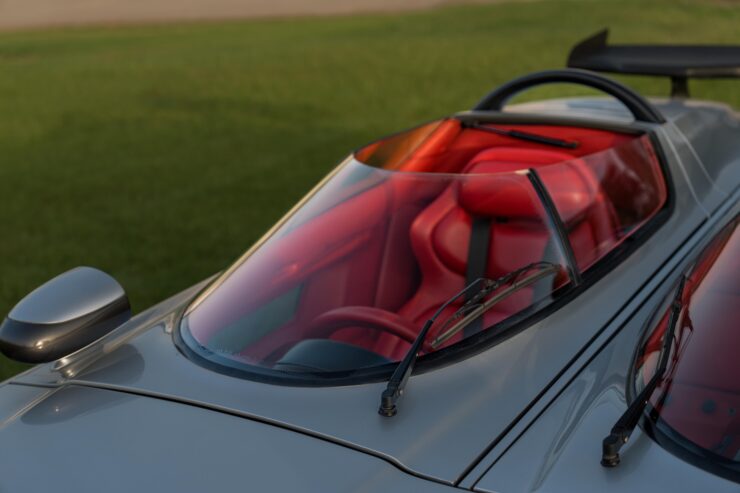
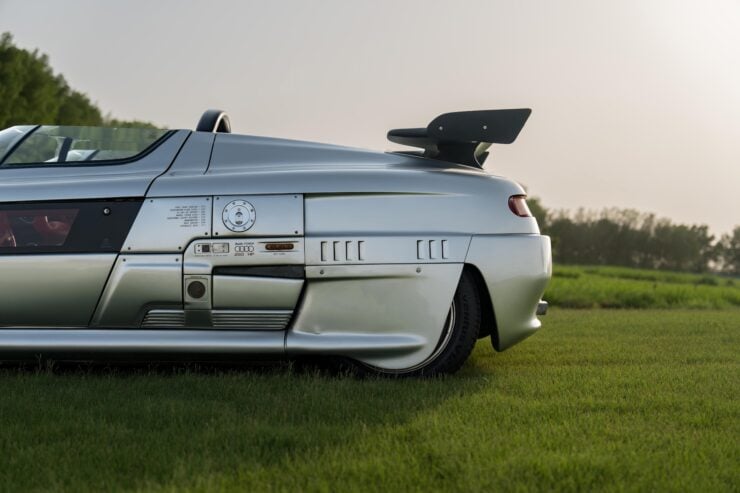
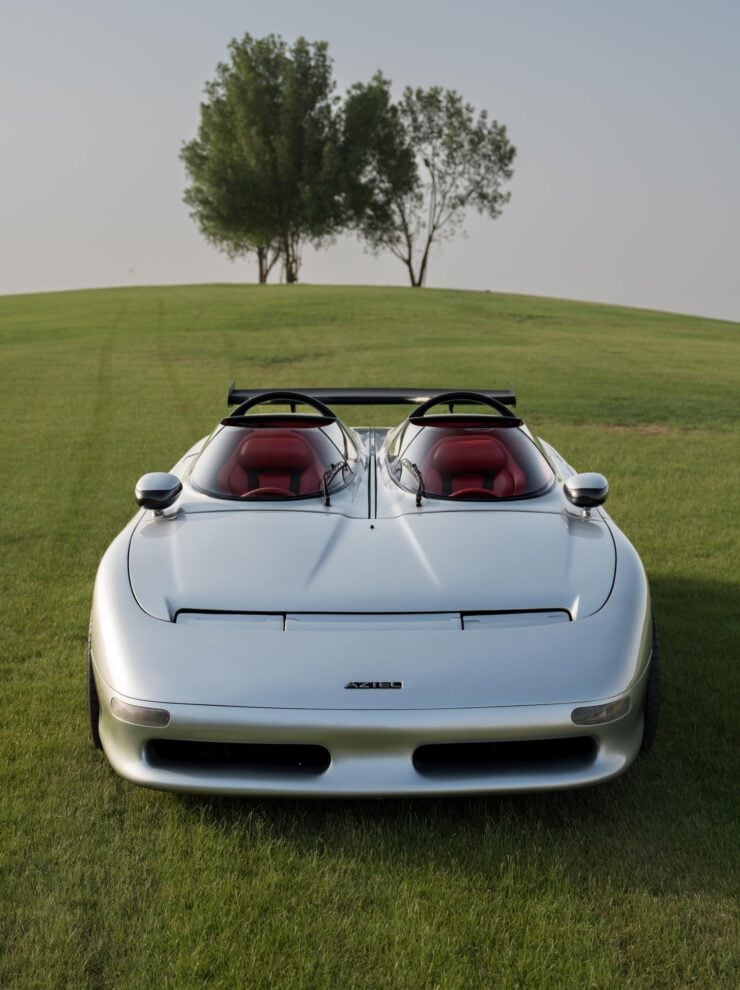
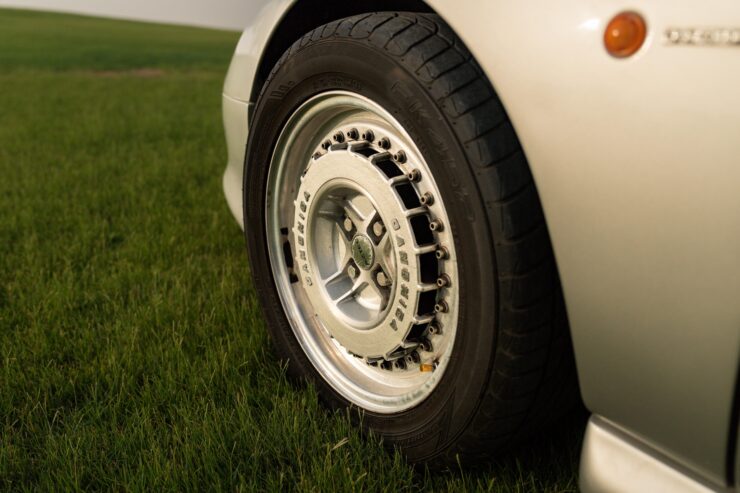
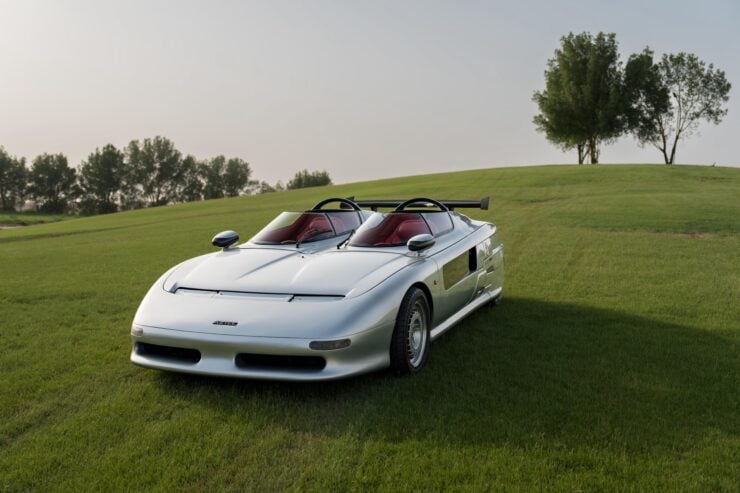
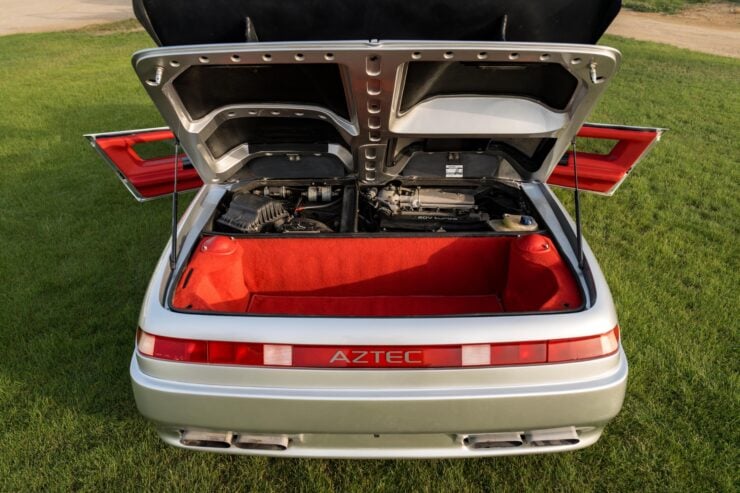
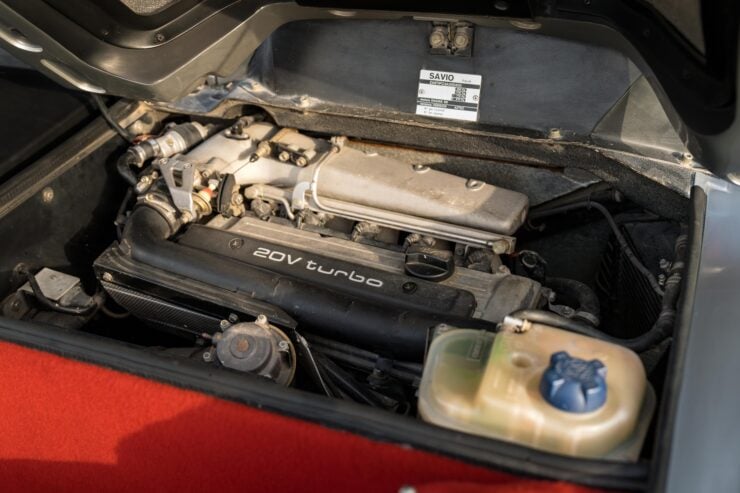

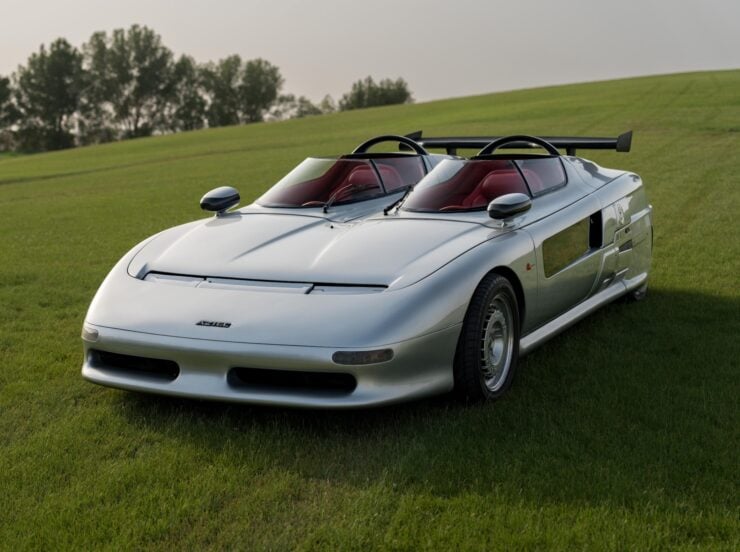

Images courtesy of Bonhams

